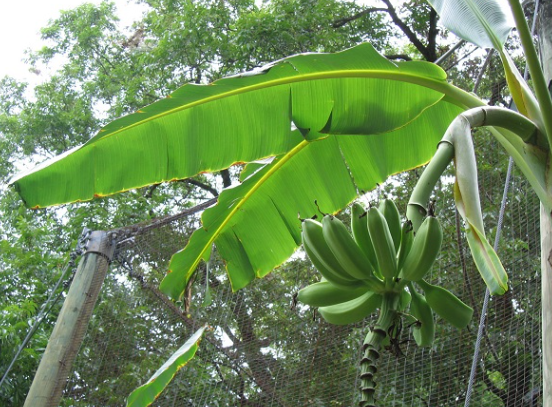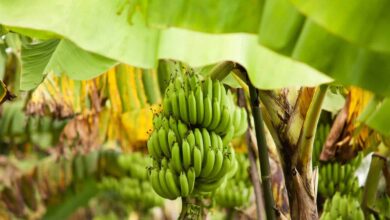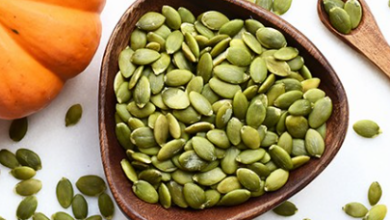How to Trim a Banana Tree Like a Pro: A Complete Guide

Do you have a banana tree in your yard? It’s really important to trim it well, especially once winter is over.
When you trim a banana tree, it looks nicer, stays healthy, and grows better. It can even give you more fruit! This super detailed guide will show you exactly how to trim your banana tree like an expert and keep it looking great.
Table of Contents
- Why Should You Trim a Banana Tree?
- What You Need to Trim a Banana Tree
- Your Step-by-Step Plan for Trimming a Banana Tree
- Step 1: Look at the Tree Carefully
- Step 2: Get Rid of Old or Hurt Leaves
- Step 3: Tidy Up the Suckers
- Step 4: Cut Away Weak or Crowded Branches
- Step 5: Make Room in the Canopy
- Step 6: Remove Old Fruit Stalks
- Step 7: Tidy Up the Area
- Safety and Extra Tips for Trimming Your Banana Tree
- Wrapping Up
Why Should You Trim a Banana Tree?
Cold weather might have hurt your banana tree. Now it’s time to fix it up.
Trimming helps the tree by getting rid of old, hurt leaves. This makes the tree look fresh and ready for the new growing season. It also helps to shape the tree, makes air move better around it, and lets sunlight reach deep inside, which are all good for its health and for making fruit.
What You Need to Trim a Banana Tree
First, make sure you have these tools ready to make trimming easy and safe:
- Pruning shears or loppers: You’ll need these to cut through the tree’s thick stems and branches.
- Gloves: These will protect your hands while you work with the tree.
- Safety goggles: Keep your eyes safe from any bits that might fall or fly around when you’re cutting.
- Ladder or step stool: For taller trees, you might need one of these so you can reach the top parts without trouble.
Your Step-by-Step Plan for Trimming a Banana Tree
Let’s go through each step for trimming your banana tree:
Step 1: Look at the Tree Carefully
Check out your tree and spot any leaves, branches, or new little shoots (called suckers) that are old or broken. This will help you know what to do when you start trimming.
Step 2: Get Rid of Old or Hurt Leaves
Start by cutting off any leaves that look bad – they might be brown or just not right anymore.
Be sure to use your pruning tools to cut them right at the spot where they meet the trunk. Taking these leaves away can make your tree look way better and can stop disease or bugs from spreading.
Step 3: Tidy Up the Suckers
Suckers are the new baby shoots that grow around the bottom of the tree or from its underground parts.
Even though they could become new trees, they can also take food away from the big tree. Find the suckers you don’t need and cut them down to the ground, but leave one or two good ones to grow.
Step 4: Cut Away Weak or Crowded Branches
Look for any branches that are not looking good or are too close to each other – they can stop air and light from getting through.
Snip these ones carefully, leaving a little bit of a stump, to help the tree stay healthy.
Step 5: Make Room in the Canopy
The canopy is like the tree’s umbrella of leaves at the top. Look for branches that crisscross or are all bunched up.
Take some of these out, but keep the tree looking even and open. This helps make sure the tree gets lots of light and stays dry, which means less chance of getting sick.
Step 6: Remove Old Fruit Stalks
If your tree had fruit last season, you might notice old fruit stalks hanging around.
Cut these stalks right next to the trunk to make the tree look nice and help it grow new fruit.
Step 7: Tidy Up the Area
Once you’re done trimming, gather all the leaves and branches you cut off and clean up the area around the tree.
You can put this stuff in a compost pile or throw it away. Keeping it clean helps stop diseases and keeps your yard looking nice.
Safety and Extra Tips for Trimming Your Banana Tree
Keep these ideas in mind when you’re trimming:
- Be Safe: Always wear your goggles and gloves to protect yourself.
- Trim at the Best Time: Wait until after the last frost of winter before you trim. This protects the tree from getting cold again.
- Clean Your Tools: Make sure your cutting tools are nice and clean, so you don’t spread any diseases to the tree.
- Take Breaks: If you’re getting tired, stop and rest a little. You don’t want to wear yourself out.
- Get Help if You Need It: If trimming feels too tricky, it’s okay to call a professional tree person to help you.
Wrapping Up
Cutting back your banana tree after winter is super important for keeping it happy and growing strong. Follow this guide and you’ll be able to trim your banana tree like you’ve been doing it for years, getting it ready to look beautiful and give lots of yummy bananas.
Just remember to check the tree, remove any old leaves, sort out the baby shoots, cut away not-so-good branches, spread out the canopy, chop off the old fruit stalks, and make sure to clean up when you’re done. With a little bit of care, your banana tree will stay healthy and produce fruit for you to enjoy.







